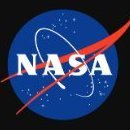Members Can Post Anonymously On This Site
What Is the International Space Station? (Grades 5-8)
-
Similar Topics
-
By Space Force
Secretary of the Air Force Troy Meink toured Mission Delta 3 (Electromagnetic Warfare) at Peterson Space Force Base, Colorado, May 28, 2025.
View the full article
-
By European Space Agency
The deadline to apply for ESA’s Junior Professional Programme (JPP) is fast approaching, with applications closing on 5 June. The JPP is a unique opportunity for recent graduates and early-career professionals to gain hands-on experience at one of the world’s leading space organisations. Successful candidates will work on real ESA projects alongside experienced experts in fields ranging from engineering and science to business and administration. If you are ready to take the first step towards a future in space, don’t miss this opportunity. Submit your application before the 5 June deadline.
View the full article
-
By European Space Agency
Image: The Copernicus Sentinel-3 mission shows us a rare, cloud-free view of Iceland captured on 17 May 2025. View the full article
-
By European Space Agency
Video: 00:02:46 For half a century, the European Space Agency (ESA) has been serving Europe as its space agency and inspiring its citizens. On 30 May 1975, the ESA Convention was signed by 10 founding Member States and has since now expanded to 23 Member States, three Associate Members, four Cooperating States and a Cooperation Agreement with Canada. This anniversary year provides the opportunity to reflect not only on ESA’s past achievements, but even more so on its future perspectives.
View the full article
-
By NASA
2 min read
Preparations for Next Moonwalk Simulations Underway (and Underwater)
A digital rendering of the NASA-supported commercial space station, Vast’s Haven-1, which will provide a microgravity environment for crew, research, and in-space manufacturing.Vast NASA-supported commercial space station, Vast’s Haven-1, recently completed a test of a critical air filter system for keeping future astronauts healthy in orbit. Testing confirmed the system can maintain a safe and healthy atmosphere for all planned Haven-1 mission phases.
Testing of the trace contaminant control system was completed at NASA’s Marshall Space Flight Center in Huntsville, Alabama, as part of a reimbursable Space Act Agreement. Vast also holds an unfunded Space Act Agreement with NASA as part of the second Collaborations for Commercial Space Capabilities initiative.
Adrian Johnson, air chemist at NASA’s Marshall Space Flight Center in Huntsville, Alabama, operates the Micro-GC, which is used to measure carbon monoxide levels, during a trace contaminant control system test in the environmental chamber.NASA The subsystem of the environmental control and life support system is comprised of various filters designed to scrub hazardous chemicals produced by both humans and materials on the commercial station. During the test, a representative chemical environment was injected into a sealed environmental chamber, and the filtration system was turned on to verify the trace contaminant control system could maintain a healthy atmosphere.
“Testing of environmental control systems and subsystems is critical to ensure the health and safety of future commercial space station crews,” said Angela Hart, program manager for NASA’s Commercial Low Earth Orbit Development Program at the agency’s Johnson Space Center in Houston. “Through NASA’s agreements with Vast and our other industry partners, the agency is contributing technical expertise, technologies, services, and facilities to support companies in the development of commercial stations while providing NASA important insight into the development and readiness to support future agency needs and services in low Earth orbit.”
NASA-supported commercial space station, Vast’s Haven-1, trace contaminant control filters and support hardware pictured within the environmental chamber at the agency’s Marshall Space Flight Center, Huntsville, Alabama.NASA Experts used the same environmental chamber at Marshall to test the International Space Station environmental control and life support system.
The knowledge and data gained during the recent testing will help validate Vast’s Haven-1 and support future Haven-2 development.
NASA supports the design and development of multiple commercial space stations through funded and unfunded agreements. NASA plans to procure services from one or more companies following the design and development phase as part of the agency’s strategy to become one of many customers for low Earth orbit stations.
For more information about commercial space stations, visit:
www.nasa.gov/commercialspacestations
Keep Exploring Discover More Topics
Commercial Space Stations in Low Earth Orbit
NASA is supporting the development of commercially owned and operated space stations in low Earth orbit from which the agency,…
Low Earth Orbit Economy
Commercial Crew Program
NASA’s Low Earth Orbit Microgravity Strategy
View the full article
-
-
Check out these Videos




Recommended Posts
Join the conversation
You can post now and register later. If you have an account, sign in now to post with your account.
Note: Your post will require moderator approval before it will be visible.